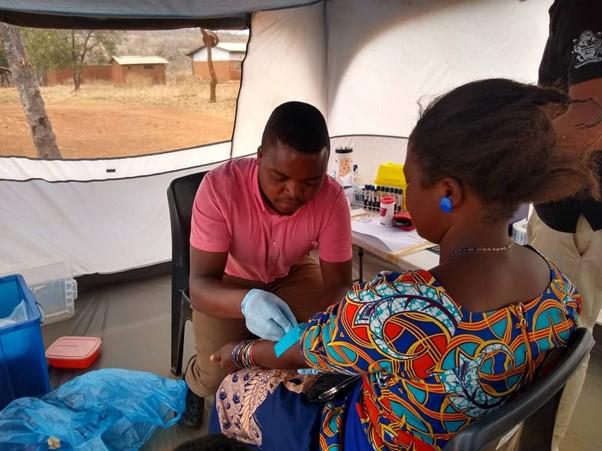Millions of people across Malawi suffer from hidden hunger – the presence of micronutrient deficiencies without a deficit in energy – due to consumption of nutrient-poor diets. Recent research has revealed selenium is one micronutrient with widespread deficiency in Malawi. We conducted the Addressing Hidden Hunger with Agronomy (AHHA) trial to test whether selenium deficiency could be reduced through a small tweak to agricultural fertilizers.
Selenium is one of ~30 micronutrients required in human diets, playing an important role in thyroid and immune function. Selenium deficiency can have a range of adverse health outcomes, including impaired growth and cognitive development among children. However, in large areas of Malawi, agricultural soils are highly weathered and contain low levels of selenium, leading to low concentrations of selenium in crops and widespread deficiency in the Malawi population. Most households in Malawi rely on subsistence farming, with plant-based diets, and options to bring in selenium-rich marine foods are very limited.
Adding tiny amounts of selenium to commonly-used fertilisers – the equivalent of 1 or 2 teaspoons per hectare – boosts the concentration of selenium in maize grain by roughly 10 times. This technique, known as agronomic biofortification, has been successfully deployed for several decades in Finland. Fertiliser manufacturers can add the selenium at production stage, so farmers don’t have to learn or adopt new practices. The approach is attractive in the Malawi context since it can deliver selenium via the staple crop maize which is consumed widely, even by poor, rural households. It is also likely to be cheap to implement, with previous estimates of approximately US$ 0.36 year−1 per alleviated case of Se deficiency in Malawi.
The AHHA trial set out to test whether consumption of selenium-biofortified maize flour could successfully improve people’s selenium status in rural Kasungu District, where selenium deficiency is widespread. The trial was conducted by researchers from The London School of Hygiene & Tropical Medicine, Lilongwe University of Agriculture and Natural Resources, Malawi College of Medicine, the Public Health Institute of Malawi and the University of Nottingham, with results recently published in the journal Frontiers in Nutrition.

Photo credit: Leonard Banda, AHHA Trial Manager
Community engagement activities started months ahead of the trial, to ensure that participants and the wider community understood the objectives of the work, and supported the process – which involved distributing a total of >200 metric tonnes of maize flour to households and taking blood samples from participants before and after the intervention. “The community had many questions about the AHHA trial”, says Dr Gabriella Chiutsi-Phiri, who led the community engagement work. “The idea of micronutrients and biofortified flour was new to them, so we spent a lot of time hearing their questions and concerns, and answering these with the help of local health and agriculture extension agents. Over time we gained the trust and support of the community, and they became partners in the project, even renovating a road to help the team deliver the trial flour”.
A bioethics team worked in tandem with the trial, applying a novel ‘real-time research ethics approach’ to support adaptive and responsive ethical practices. The trial was double-blinded and placebo-controlled, meaning neither participants nor researchers knew who was getting the selenium-biofortified flour or the control (not biofortified) flour.
The AHHA trial investigators found that the intervention was highly effective: at the end of the trial, selenium deficiency was indicated in 92% and 100% of adult women and children in the control group, compared to just 7% and 19% in the intervention group. This improvement in selenium status occurred after just 8 weeks of receiving the selenium-biofortified flour.
The trial provides strong proof-of-principle that selenium biofortification of maize via fertilisers could be an effective intervention in Malawi. “This is an exciting finding for Malawi”, says Dr Alexander Kalimbira, who co-led the project. “We need all tools in the box to address the issue of hidden hunger – dietary diversification, food fortification, supplementation and biofortification of staple crops. Combining these approaches gives us the best chance of reaching everyone with all the nutrients they need for a healthy life”.
The next step is to work with agriculture and public health partners to devise an implementation strategy, that sees selenium-enriched fertilisers made available to Malawian farmers. Continued collaboration between agriculture and public health sectors will be important to maintain progress in improving nutrition in Malawi.






